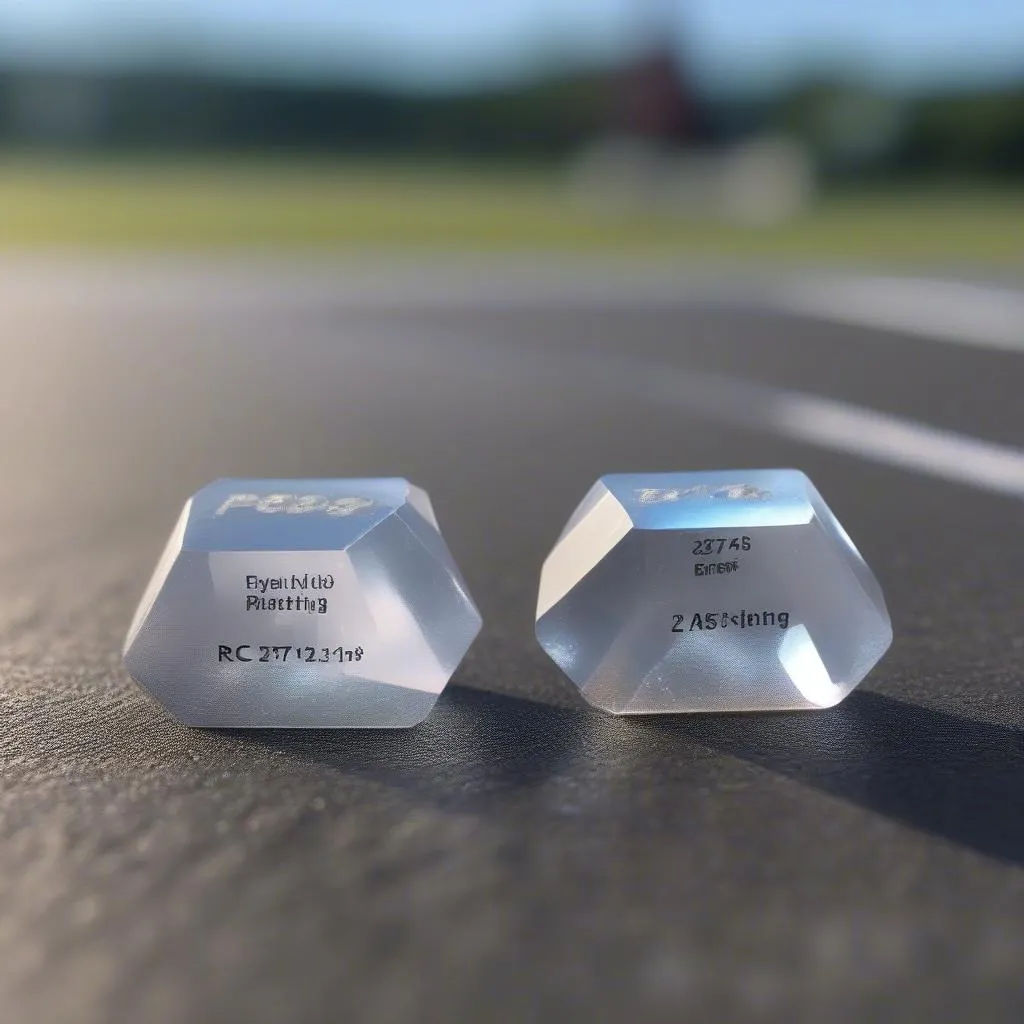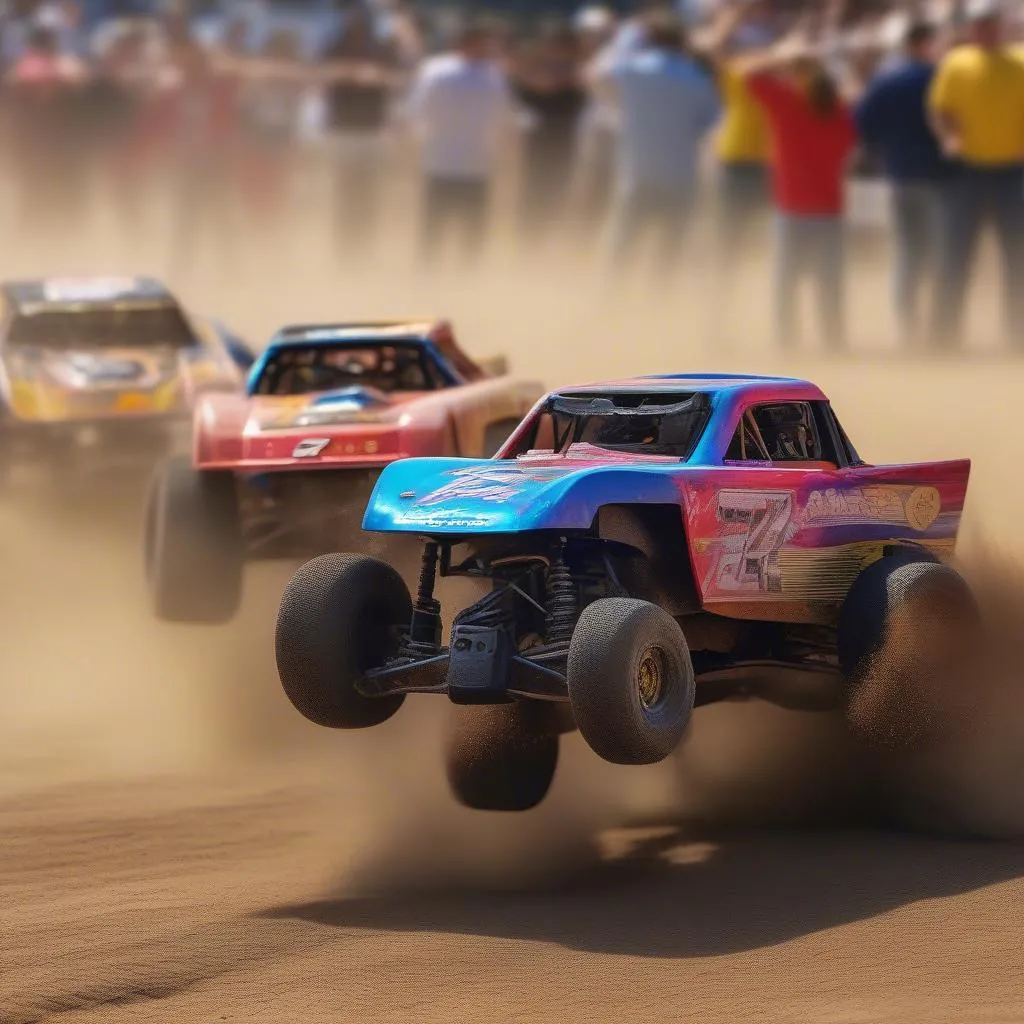Ever found yourself at the park, controller in hand, completely baffled why your RC car is stuck doing donuts while your buddy’s is tearing up the track? You’ve replaced the batteries, checked the antenna, but nothing seems to work. The culprit might surprise you: your Rc Car Crystals.
“Crystals? Like the ones in my grandmother’s jewelry box?” you might be thinking. Well, not exactly. While they share a name, these crystals are a far cry from sparkling gemstones. They’re actually tiny electronic oscillators that play a crucial role in your RC car’s performance. Think of them as the secret handshake between your transmitter and receiver, ensuring they’re always on the same page.
Decoding the Mystery: What do Rc Car Crystals Actually Do?
In simple terms, RC car crystals determine the frequency at which your transmitter and receiver communicate. Each crystal vibrates at a specific frequency when an electric current is applied. The transmitter and receiver both need crystals tuned to the exact same frequency to understand each other’s signals.
Imagine trying to have a conversation in a crowded room. It’s chaotic, right? Now, imagine you and the other person each have a special earpiece that only allows you to hear each other. That’s essentially what the crystals do for your RC car. They cut through the interference and create a clear channel for communication.
“But why do they matter so much?” you ask. Well, here’s the kicker:
Mismatched Frequencies = RC Mayhem
If your transmitter and receiver crystals aren’t perfectly matched, you’re in for a world of frustration. It’s like trying to speak French to someone who only understands Spanish. You might think you’re giving clear instructions, but your car will either respond erratically or not at all.
Here are some common scenarios you might encounter with mismatched crystals:
- The “possessed car” syndrome: Your car moves on its own, ignoring your commands. This is a telltale sign of interference from other RC cars in the vicinity.
- The “snail’s pace” dilemma: Your car crawls along even at full throttle. This could indicate a weak signal due to a significant frequency mismatch.
- The “random direction” roulette: Your car veers off in unexpected directions, turning your exciting race into a comedy of errors.
Choosing the Right Crystals: Frequency is Key
So, how do you avoid these RC nightmares? By choosing the right crystals, of course! Crystals are typically labeled with their frequency in megahertz (MHz).
When buying crystals, there are a few things to keep in mind:
- Matchy-matchy is the name of the game: Always ensure your transmitter and receiver crystals have the exact same frequency. Don’t try to pair a 27MHz crystal with a 49MHz one – it just won’t work!
- Channel surfing for RC cars: Just like your TV remote, RC cars operate on different channels within a frequency band. This helps prevent interference when multiple cars are racing together. Make sure everyone at the track is using a different channel to avoid any mid-race collisions.
 RC car crystals close up
RC car crystals close up
Common Questions About Rc Car Crystals
Still have questions about these tiny but mighty components? Let’s tackle some common queries:
Q: Can I use any crystal with my RC car?
A: Unfortunately, no. Crystals need to be compatible with your specific RC system’s frequency band (usually 27MHz, 49MHz, or 2.4GHz).
Q: How do I know if my crystals are bad?
A: Besides erratic car behavior, damaged crystals might show physical signs like cracks or discoloration.
Q: Can I replace crystals myself?
A: Absolutely! It’s a simple plug-and-play process. Just make sure to handle them with care and ground yourself to avoid static damage.
Beyond Crystals: Other RC Frequency Factors
While crystals are the heart of RC frequency control, other factors can affect your car’s performance:
- Antenna condition: A damaged or poorly positioned antenna can weaken your signal.
- Interference: Electrical devices, power lines, and even other RC cars can cause interference.
- Distance: The further your car is from the transmitter, the weaker the signal becomes.
 RC cars racing on track
RC cars racing on track
Keep Your RC Car Running Smoothly
Just like any piece of technology, RC cars require a bit of care and understanding to perform their best. By understanding the role of crystals and other frequency factors, you can troubleshoot issues, make informed purchase decisions, and ensure your RC adventures are always smooth sailing (or should we say, smooth driving?).
Looking for more tips on RC car maintenance or interested in exploring the world of diagnostics tools for your full-sized vehicle? Check out our other articles on Types of Paint Finishes on Cars or AB 1771 OBD. And remember, if you need expert assistance with diagnostics software installation, our team of automotive specialists is just a WhatsApp message away at +84767531508. We’re here to help you keep your vehicles, big and small, running in tip-top shape!